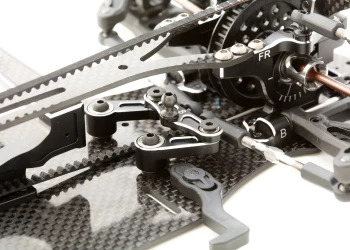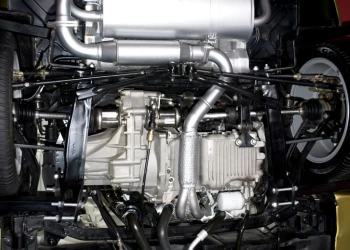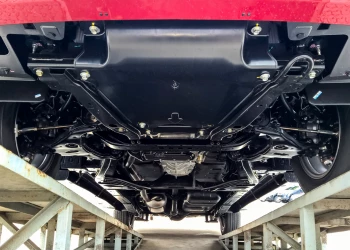Pressure is on tire makers for safety, accuracy in reporting
Add bookmarkThe new active-response tire is part of a complex system that includes the axle, wheel, brake and bearing, and a set of sensors that rival those in other automotive systems like the engine and battery.
Monitoring tire performance and acting on data is now in the realm of intelligent warning and action software devices. Like all safety-specific transportation components, tires and their new technology are regulated and reviewed intensely.
In the past, the tire was a commodity that was used up and either refitted or discarded. Large truck tires are almost always retreaded; their bodies are made to be used over and over, so over the years technology developed to make tire substrates last longer. For fleet transportation, smart tires will use sensing and warning not just for safety but for cost savings on a large scale. Changing tires at precisely the right time will be a great advantage over approximations like mileage and tread depth.
There are many more aspects of tire life to consider along with tread wear. A tire with more tread depth can actually be less safe than one with less tread since other parts of the tire could be under severe stress, or materials inside the tire have become unstable. Sensors will detect all these conditions and more: they will predict the tire’s vulnerabilities and warn accordingly.
Tire pressure and stress
Checking the stress level of materials is an old manufacturing process which, depending on the material, did not take every stress factor into account. Items like tires can experience stress from many angles at the same time. Testing today uses many more realistic conditional situations, since a major part of stress testing is to test stable operation of a part or system outside standard usage. (1)
Much of the technology for tire monitoring was created to check for materials fatigue in other industries. Stress testing inorganic materials like metals and organic materials like wood have long been standard in construction or machinery manufacturing. Twisting and stretching tests determine the tearing limits of materials like resins, plastics rubber and cloth. One of the basic tests for tire strength is side-to-side, or lateral, tensile strength. A tire must not only stay in one piece but must not separate from its wheel.
Now, that tensile strength, sidewall stress and turning stress will be monitored continuously. The data that is generated will become part of the tire’s traceable life.
Drive trains move together
One of the driving forces (pun intended) for more technical AI in vehicles is autonomy. The more often systems are proven in testing and real driving, and redundancy becomes inherent, the more confidence people will have in placing cars that drive themselves onto the streets.
All these factors will be included in the future drive train that will touch the road using intelligent tires that report to the vehicle, the cloud and the roadway sensor system. All pieces of the drive train must work together to provide a complete picture of the performance of tires as they age. The data received from wheels, suspension and axles will confirm the stability of the vehicle, allowing data from the tire to be accurate and not adulterated by faulty equipment in the train.
For example, the pressure sensor in a left rear tire continually sends an overstressed warning. The tire is examined, and its sensors checked through separate testing. Later, it’s discovered that the stress on the tire was due to faulty or worn bearing in the wheel. Any play in the lateral movement of a wheel due to its bearing will put a great amount of stress on the tire in turns. This loose movement was due to the bearing, not the tire.
Tests and results
Stress on the tire is only one cause of less than optimum operation. Low tire pressure slows the tire in relation to the others. This non-equilibrium wears tires out and causes drive train stress. This is the reason for keeping the pressure in all four (or more) tires equal. Tire pressure can be slightly low or high, depending on conditions, if it is the same in all tires.
Testing tires singly and in groups under real-time stress conditions has become science in itself. (2) Testing equipment attached to computers is changing the way tires are tested against the forces of everyday use. This laboratory provides tests specifically designed for the size, type and construction of the tire. “It (equipment) is capable of dynamic steering and cambering like in a vehicle and can be utilized for standard or customized analyses. Different tread wear drive cycles are used depending on the type of tires being tested, and criteria being tested,” the report said.
Sensor reporting
Correct sensing and reporting will put the blame on the worn bearing (or perhaps the wheel assembly that includes the bearing) so the problem can be fixed sooner. Sensors are getting smaller and more powerful. Thin film embedded in tires can record all the vital functions and send information to the cloud.
This technology is especially suited to large vehicles and fleets. Commercial trucking spends vast amounts of time and money on maintenance; it’s the largest expenditure outside of driving and other personnel. Maintaining drive trains including tires is a major expense of operating a large fleet.
New sensors are being developed constantly. One company is developing tire pressure monitoring for multiple vehicles at once. (3) The system expands the idea of pressure and temperature monitoring to include software for multi-positional reporting. The ContiConnect® system includes pressure and temperature monitoring reported to a central station. Here are the highlights as listed by the company:
- “Consists of different components, which include the sensors in the tires, a yard reader station, a backend as well as a web portal and notification services.
- Monitors, analyzes and reports tire pressure and temperature for entire fleets based on data from sensors in the tires, collected by a station in the yard.
- Sends alerts, if tire pressure deviates from the defined value.
- Notifies group of defined recipients via e-mail or SMS and suggests corrective measures, if necessary.
- Allows the fleet manager to act proactively instead of fixing problems reactively.
- Higher uptime of entire fleet, less maintenance, and overall success in mobility and efficiency.”
Costs drop with data
The most critical function of proactive monitoring is the ability to preempt problems and maintain a drivetrain component before it fails. This can be done only if reporting is thorough and accurate. Systems like multi-vehicle monitoring need fail-safe, active and passive sensors working together. Planning the system requires these back-ups.
Eventually, the system can become universal for freight lines and public transportation, including continuous pressure check, continuous temperature check, surface temperature, pressure, tread, road conditions, axle load, and wheel alignment. The system will then be able to interpret road surfaces, and conditions like ice and snow, warning other vehicles and slowing or changing drive parameters for the driver. When vehicles are connected to a central system, other trucks on the road will automatically be warned of the conditions.
More sensing in the future
Miniaturization in electronic components continues to be on the top of researchers’ agendas. Research at Duke University has produced a metallic carbon nanotube film that can be printed as a sensor to monitor tire wear. This technology could be used for more applications over time: inside the tire bead to check critical stress on lateral movement in severe turns that weaken the bead, and more.
The next set of sensors coming along is roadway connection sensing. Sensors embedded in roadways and placed along routes will relay information to and from vehicles. This will add a layer of safety to autonomous vehicles, but also be useful for automobiles detect road conditions and other problems. Sensing above the roadway in constant satellite connection with police and fire departments will monitor problems on particularly dangerous sections of road.
However, efforts will continue to be concentrated on the individual passenger car or truck, since safety and efficiency are the driving factors of transportation today. Mechanics, drivers and dispatchers will be more informed about performance of drivetrains than ever before.
- https://www.mtu.edu/materials/k12/experiments/tensile/
- https://www.smithersrapra.com/testing-services/by-sector/automotive/tire-testing/indoor-treadwear
- https://www.continental-tires.com/transport/tire-monitoring
- https://phys.org/news/2017-06-sensors-real.html
- https://www.trafficsafetystore.com/blog/robot-roadway-vision-how-autonomous-cars-see-the-world/
- https://www.youtube.com/watch?v=sBroSVWIbes&t=213s






















